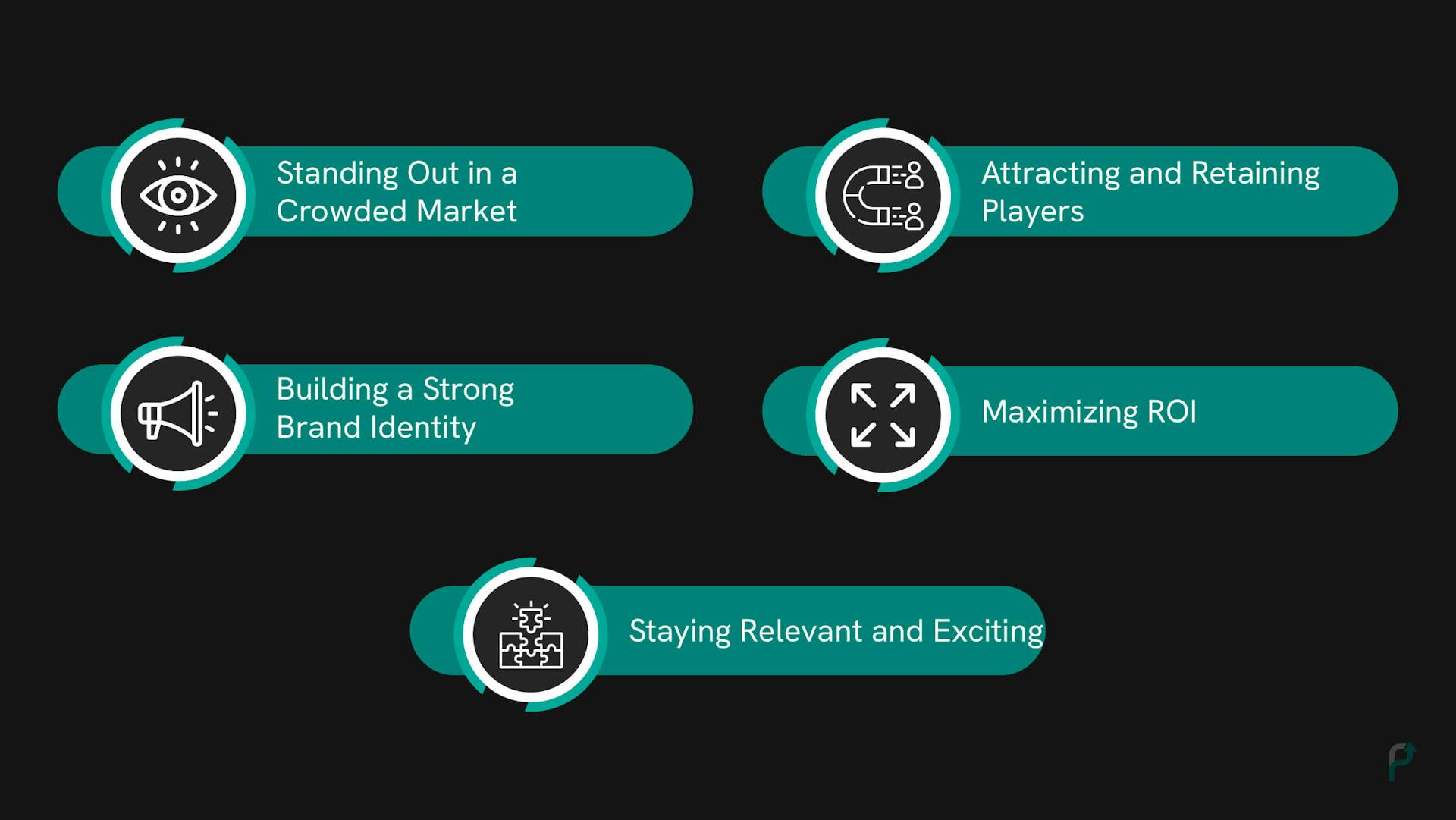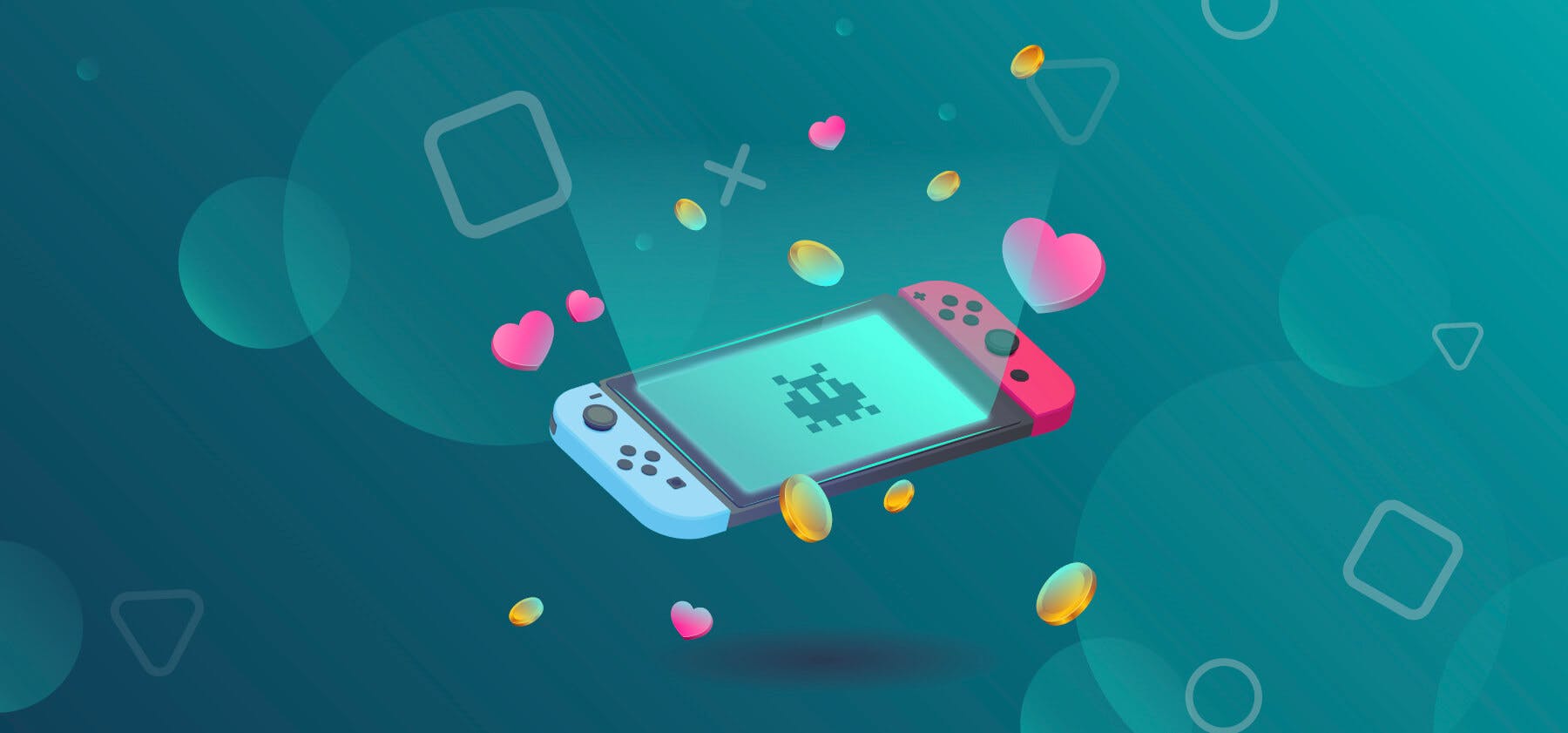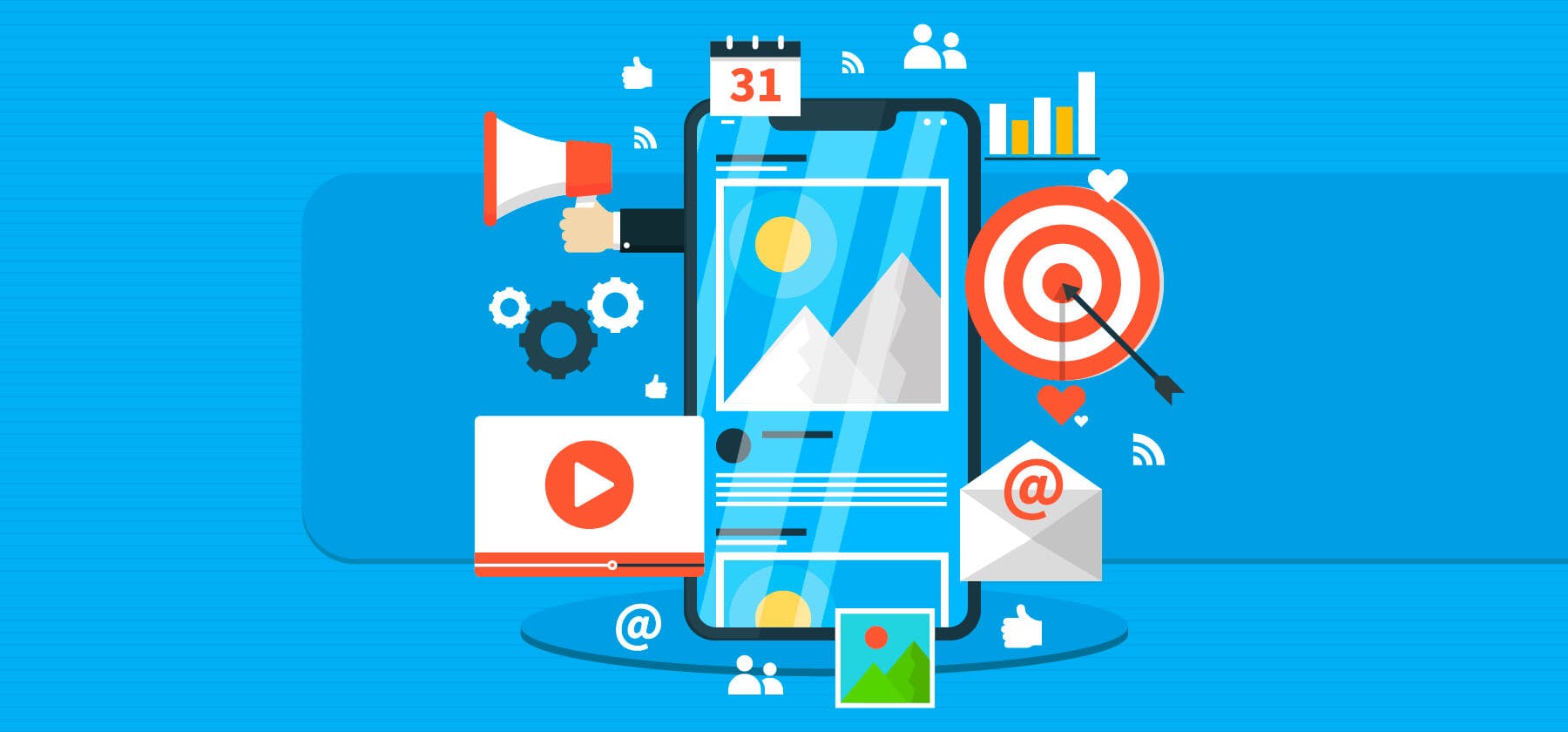- The gaming universe is ever-expanding and it is important to create a compelling game to garner users. However, effective mobile game promotion is a crucial second step. It is vital that game developers understand how to promote mobile games for them to be successful, get recognition, and increase game revenue.
- This article will delve into why it is important to promote your mobile game, and closely examine the best practices for successfully marketing the mobile game.
What is Mobile Game Promotion
Mobile game promotion is the strategic and multifaceted process of marketing gaming apps. The primary objective is to target the right audience, acquire maximum users, and boost engagement and retention.
Effective gaming app promotion services involves a combination of techniques and channels that are specific to gamers and game apps. Furthermore, mobile game promotion extends beyond the initial download phase, as it aims to create a long-term relationship between the game and its users, fostering brand loyalty and monetization opportunities through in-app purchases, advertisements, or subscription models.
10 Best Strategies for Mobile Game Promotion
-
Understanding your audience
Understanding your audience begins with identifying target demographics. This means you need to collect data on age, gender, location, and interests. It is important to understand your audience and the kind of games that appeal to them to tailor the best mobile game promotion messages and strategies for them.
Further, it is important to dive deep into the analysis of this data. When you do so, try to answer these questions: What types of games do they enjoy? How frequently do they play? What motivates them to engage with mobile games? This will help you design a game that resonates with the audience.
Additionally, create user personas (detailed profiles of your ideal players). This includes behaviors, motivations, and characteristics. By creating a user persona, you are likely to have a better understanding of whom your game is meant for and make decisions accordingly.
Finally, it is important to conduct market research by studying your competition and market trends. Understand what games are successful and why. Gain knowledge on what gap exists in the market and how your game can fill it.
-
Pre-Launch Preparation
Firstly, it is of absolute importance to create an engaging and unique game before delving into other mobile game promotion strategies. Ensure that your game starts apart from others and is visually appealing to your target audience.
It is also important to provide a smooth user experience. Focus on eliminating bugs and glitches from early on and ensure that the navigation and controls keep the players engaged. Ensure that you A/B test the product and also share it with a controlled group of gamers to garner their feedback.
Your app description must convey the essence of the game, and its unique selling points but must also be optimized for keywords.
Thus, having a sound pre-launch strategy to promote gaming apps is important.
-
Leverage In-Game Advertising
In-game advertising involves placing ads strategically within the gaming environment. It seeks to make these ads non-intrusive and beneficial to the player experience.
Rewarded video ads are in-game ads that can monetize gaming apps effectively. These are short video ads that players can choose to watch voluntarily in exchange for in-game rewards, such as virtual currency, power-ups, or extra lives. Players willingly engage with these ads, which can boost your ad revenue and improve player retention.
Interstitial ads are another foolproof way to monetize gaming apps. Interstitial ads are full-screen advertisements that appear at natural breaks in gameplay, such as between levels or during transitions. These ads are strategically placed to minimize disruption to the gaming experience, appearing at moments when players are already transitioning or waiting, making them less intrusive than other ad formats.
Offerwalls are a monetization and engagement strategy where players are presented with a selection of offers and tasks in exchange for in-game rewards. These ads usually include a variety of tasks, such as completing surveys, watching videos, installing other apps, or making in-app purchases in partner apps. Players are rewarded with in-game currency or items for completing these actions.
Native ads are another effective option that seamlessly blends with the game's design and context, making them less obtrusive. They can include billboards in racing games or virtual storefronts in simulation games. Native placements should enhance the immersion rather than disrupt it.
-
Host In-Game Events and Tournaments
In-game events and tournaments are easy ways to keep the game exciting and the players engaged, and prove to be a good mobile game promotion technique. Special events in your game create a sense of excitement and anticipation among players. They know that for a limited time, something unique and rewarding is happening within the game. This anticipation can generate buzz and encourage players to return regularly during the event period.
Introducing new challenges with these events can be themed around holidays, seasons, or game milestones, providing novelty to keep players engaged. Special events can also be leveraged to offer exclusive in-game rewards for event participation to incentivize players to take part. These rewards can be rare items, cosmetics, or other valuable assets, motivating players to invest time in the event.
Competitions and tournaments are another effective way to promote gaming apps. Competitive gameplay modes and tournaments tap into the innate competitive spirit of gamers. Leaderboards display the rankings of participants, showcasing the top players or teams. Public rankings can motivate players to improve their skills or collaborate with friends to climb the ranks. High rankings can be a source of pride and recognition.
-
Encourage User-Generated Content (UGC)
Encouraging players to create and share content related to the game can help popularize the game, and help create a connection with the game.
Fan art is a creative way to acquire more users and increase app engagement. Encouraging players to create fan art fosters a deeper emotional connection to the game. It demonstrates that you value and celebrate their creativity. Players often share their fan art on social media platforms, using game-related hashtags and mentions. This organic sharing amplifies the game's visibility, reaching a broader audience.
Gameplay videos and walkthroughs are sound strategies to maximize users. Newcomers often seek tutorials, tips, and strategies, and player-created videos can provide valuable insights.
Many gamers upload their gameplay videos to platforms like YouTube and Twitch. These platforms have large gaming communities, making them ideal places for your game to gain exposure.
UGC is instrumental in demonstrating that game developers value and appreciate their players, leading to increased player loyalty. UGC also provides a diverse range of content and can cater to different player preferences and attract a broader audience, being a viable mobile game promotion strategy.
-
Cross-Promote Within Your App Portfolio
Cross-promotion is an effective mobile game promotion strategy. By incentivizing players to explore your other games by offering attractive rewards within the game they're currently playing. These rewards can include in-game currency, exclusive items, power-ups, or discounts on in-app purchases.
Game publishers can also provide players with access to exclusive content in one game if they have installed and played another game from your portfolio. This can include unique characters, skins, levels, or storylines.
Additionally, offering discounts on in-game purchases, or creating bundle deals for players who engage with multiple games in the portfolio. This encourages players to spend more within the ecosystem.
Cross-promotion encourages players to try out your other games, which can result in increased playtime and overall engagement with your apps. When players find value in multiple titles, they are more likely to remain active and invested in your ecosystem.
-
Implement a Refer-a-Friend Program
Refer-a-friend programs can assist in turning existing players into promoters of the game. It leverages the power of player advocacy and can lead to organic, viral growth.
In a refer-a-friend program, players are motivated to refer their friends to download and play the game by offering rewards. These rewards can be enticing, such as in-game currency, exclusive skins, unique characters, power-ups, or other valuable in-game items.
When players refer their friends, it leads to organic, word-of-mouth player acquisition. This form of acquisition is highly valuable as potential new players are introduced to the game through trusted sources (friends and acquaintances).
The easiest way to get initial attention for a gaming app is to start appealing to your family and friends. Encourage them to use your app and ask them for feedback. This would potentially help figure out areas of improvement, making it an important mobile game promotion strategy.
-
Run Apple Search Ads
Mobile game promotion through Apple Search Ads is another essential strategy to ensure that your game gathers more popularity. Promote your gaming apps by leveraging Apple's App Store Search ads. Apple Search Ads are ads that appear within the Apple App Store on top of the results page. This helps game marketers or developers to connect with relevant users who look for keywords related to the app.
The app stores are competitive marketplaces with millions of apps attempting to stand out. Additionally, they are cost-effective since you only pay when a user interacts with the ad, as these ads run on Cost Per Installs or Cost Per Click models. Further, Apple Search Ads provide details metrics to help track your ad campaign's performance.
-
Set up Google App Campaigns
Google App Campaigns are a paid advertising channel. They come under the umbrella of Google Ads campaigns and are specifically designed to advertise apps across the web. So, marketing a gaming app on this channel would be a sound mobile game promotion strategy. Google app campaigns help advertise apps on all of Google's important platforms like YouTube, Google Play, Google Search, and Google Display Network.
Google universal app campaigns enable advertisers to reach a wider audience across different Google properties. Additionally, these campaigns employ automated optimization of ad campaigns.
-
Post-Launch Maintenance and Support
Post-launch, it is vital to respond to bug reports on time and release updates to fix them. A game with many bugs will frustrate users and lead to negative reviews resulting in high churn rates
It is also important to expand your game with novel gameplay, content, levels, and features. This helps keep the players hooked to the game.
It is also crucial to keep a communication channel with the user base. Keep players informed about upcoming updates, events, and changes through in-game notifications, email newsletters, and social media announcements.
Importance of promoting gaming apps
Mobile game promotion is crucial in the highly competitive gaming app market. Some compelling reasons as to why one should invest in mobile gaming promotion are as follows.
 Importance of Promoting Gaming Apps
Importance of Promoting Gaming Apps- Standing Out in a Crowded Market: It is important to ensure that the gaming app does not get lost in a sea of competing titles as the app stores are flooded with countless mobile game apps.
- Attracting and Retaining Players: Mobile game promotion captures the attention of potential players, encouraging them to try out your game. Additionally, ongoing promotions such as regular updates, events, and in-game rewards keep players engaged and coming back for more.
- Building a Strong Brand Identity: Mobile game promotion helps establish a credible brand identity, cultivating trust among players, and fostering loyalty and a dedicated user base.
- Maximizing Return on Investment (ROI): Mobile game promotion increases their visibility and leads to a more positive ROI. If an app remains undiscovered, all the time and resources invested in its development may go to waste. Promotion ensures that the publishers' investments pay off.
- Staying Relevant and Exciting: Regular mobile game promotion helps maintain the game's relevance and ensures that players continue to find the game interesting.
Concluding words
In the world of mobile game promotion, we have unraveled the essential steps required to be embarked upon after launching your game. From understanding your audience to leveraging social media, we have covered a spectrum of strategies to incorporate while one attempts to promote gaming apps.
As we conclude, it is crucial to note that mobile game promotion is not a one-time endeavor but an ongoing commitment to players. The steps we covered are the pillars that can ensure long-term success.
The only ad platform built for developers by developers.
Contact us now for a product that fits your needs! It’s quick, simple and easy.



